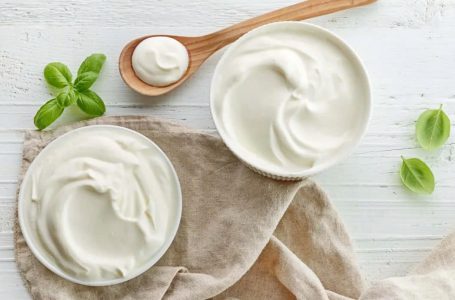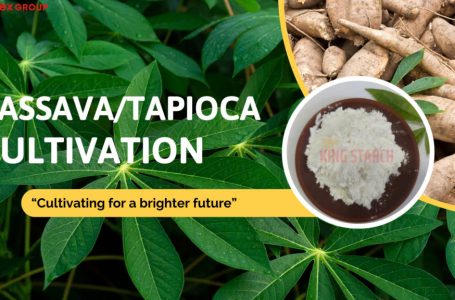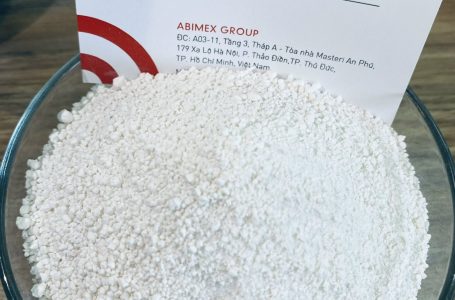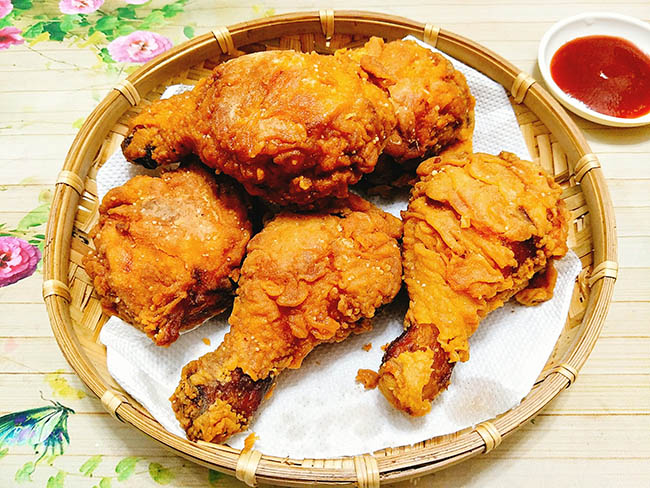As Harold McGee explains in “On Food and Cooking,” starches are made of long chains of glucose sugar molecules that are linked to each other. Starches are useful in thickening because of the way they behave in the presence of hot water. He summarizes the process in “Keys to Good Cooking”: “When heated in a liquid, starch granules soak up water, swell, and release long, tangly starch molecules, all factors that cause the liquid to thicken.”
McGee says that cooking for an extended period, bringing the mixture to a boil or vigorous stirring will eventually thin out the mixture, which you may or may not notice depending on how thick what you’re making is. In a normal sauce, you may not notice the thinning much, other than a desirable smoothness at which point the starch particles are no longer detectable. Excessive stirring of something thicker like a custard can break it down.
Flour
Flour is not a pure starch, meaning there are other proteins and fats that interfere with the starches’ ability to thicken, which is why it requires more to be added to a recipe to incorporate as effectively as some of the other options, McGee says. Another problem: Flour has to be cooked to taste good. In “The Food Lab,” J. Kenji López-Alt says that cooking the flour in butter or oil (to make a roux) first gets out that raw flavor. The fat keeps the starches from clumping together prematurely, too. Once you’re done cooking the flour, you can add it to your soup or sauce, leaving the fat to melt away and the starches to disperse. Keep in mind that the thickening power of a roux decreases the darker it gets. Foods thickened with flour, McGee says, will be opaque and matte. Gelation temp: 126 to 185 degrees Fahrenheit.
Uses: Avoid flour as a thickener in fillings, says Lauren Chattman in “The Baking Answer Book.” It can form gluten and turn tough. Flour is a go-to for a reason in gravies, says Nicole Rees in Fine Cooking. It doesn’t matter if the gravy is opaque, and the flour will help the gravy maintain its integrity on reheating. And since you can make a gravy with fat or drippings from roasted meat, you can use them to cook the flour. For instant thickening in sauces and gravies, consider Wondra, a pre-gelatinized low-protein flour that dissolves quickly in hot or cold liquids.
Flour holds up well in longer-cooked dishes, including gumbo or a braise such as boeuf bourguignon, and can add more nutty flavor when browned in the pot as part of the roux.
Cornstarch
Unlike wheat flour, cornstarch is a pure starch. That makes it a more effective thickener. To reach its full potential, though, it needs to get just about boiling. McGee notes that cornstarch also has a distinctive flavor due to its processing method, which is why, even beyond the risk of making a mixture too thick, you don’t want to overdo it. Cornstarch lends a milky appearance to finished dishes. Gelation temp: 144 to 180 degrees Fahrenheit.
Uses: “Cornstarch gives fruit a satiny, less shiny gloss than tapioca. It won’t clump up and dry out when exposed to hot air, as tapioca will, so it is the natural choice for open-top baked fruit desserts,” says Chattman. Especially with cornstarch, do pay attention to the typical instructions that recommend seeing juices bubbling, which indicates the starch has gotten hot enough to thicken. Cornstarch especially shines in something like a stir-fry sauce, thanks to its translucent shimmer, Rees says.
Cornstarch works well in soups and stews, and it lends a somewhat translucent appearance that is rich but not muddy (think hot-and-sour soup).
Cornstarch, as well as flour, helps puddings and custards by allowing the eggs to properly set at a higher temperature, which often gets dangerously close to where the eggs can curdle. The addition of starch staves off the curdling, and flour and cornstarch are good here because they can tolerate higher temperatures and set and thicken well when cooled.
Arrowroot
This is the first of a few tuber and root starches to consider. Arrowroot is similar to cornstarch in that it needs to reach a fairly high temperature to thicken, making it a decent swap for cornstarch. It turns clear when cooked, with a neutral flavor. According to McGee, it creates a less stringy end result than the other tuber and root starches below. However, it can form an unappealing texture when combined with dairy, says Sarena Shasteen, culinary content specialist at Bob’s Red Mill. Gelation temp: 140 to 187 degrees Fahrenheit.
Tapioca
“Unlike cornstarch, tapioca begins to swell and absorb liquids long before it’s boiling-hot, providing greater thickening power in low- to no-heat applications,” Stella Parks explains over on Serious Eats. This neutral-flavored starch comes from the root of cassava, which is important to look for on the package, Parks says, since tapioca starch from Asia might be made from other plants whose starches gel differently. Tapioca lends a clear, glossy appearance, but can also skew stringy in water, McGee says, making it a better option for puddings. That tendency for stringiness is another reason tapioca is often sold in pearls that are already partially swollen with water, so that they quickly soften and finish thickening. Gelation temp: 126 to 150 degrees Fahrenheit.
Uses: Tapioca “is flavorless and gives fruit and fruit juices a glossy shine,” Chattman says, making it a favorite alternative to cornstarch in pies. Or get the best of both worlds: “Juices thickened with both cornstarch and tapioca become satiny and smooth, an appealing combination,” she says. If you need a last-minute course correction in a sauce, McGee says tuber and root starches, especially tapioca and potato, can help because of their potency, speed and neutral flavor.
Potato
Shasteen says this is probably the most palatable starch since it’s a familiar, though fairly neutral, flavor. Potato starch is the most potent of the bunch, with long starch molecules that quickly tangle with each other and thicken a liquid. Those longer molecules, McGee says, can lend the impression of stringiness. Potato starch does, though, create a fairly transparent appearance. Gelation temp: 136 to 150 degrees Fahrenheit.
Uses: In “CookWise,” Shirley Corriher says the “firm, clear gel” that potato starch makes can be a good fit in pie. You can use it in sauces, according to McGee, though be aware that it will “give a noticeable initial graininess.” Here’s where you want to keep stirring because eventually, you will break the starch granules and then the consistency will turn finer and thinner. Potato starch will help maintain that consistency because it doesn’t congeal as much when cooled, McGee says.
Usage tips
Just because some starches are standouts in certain areas doesn’t mean you can’t substitute for one another, especially if you’re in a pantry bind (and if you understand the attributes of the starches mentioned above!).
According to Corriher, these are the equivalents to thicken 1 cup of liquid for a “medium sauce”:








